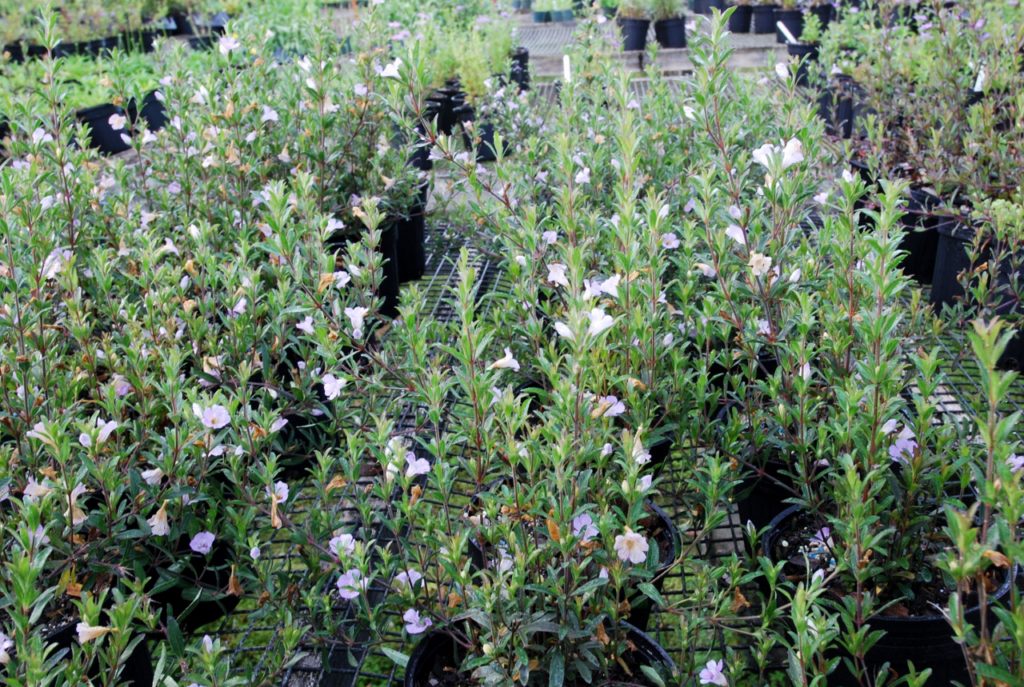Twinflower
Dyschoriste oblongifolia
There are three species of Twinflower in Florida. The Common Twinflower is the most widely used and is naturally found throughout the Southeastern U.S. down to Indian River County. It prefers higher ground and slightly moist soil in places like Wekiva Springs State Park and the Central Ridge. Click for more info.
This species has small oval leaves, blue flowers and is only a foot or less tall. It spreads by underground roots close to the plant so that a nice tight mass is formed over time that lasts for many years.
Although the flowers aren’t very showy, they, along with the dense foliage make a nice border or groundcover. It works well under a specimen tree like Lignum Vitae. Weeding is fairly easy because the dense growth excludes most weeds.
Try mixing with Havana Scullcap, Fog Fruit, Silkgrass, Mimosa, Beach Verbena, Rustweed and Seaside Joyweed for a very low groundcover. Since it doesn’t climb, other wildflowers can be placed near it. No Dune Sunflowers nearby though. No maintenance other than occasional weeding is needed.
There is a very small species called Rockland Twinflower or Pineland Snakeherb, Dyschoriste angusta That is found in the Pine Rocklands of Dade County. It can also be found rarely up to Martin County in Pinelands.
This has very small linear leaves and blue flowers and makes a nice mat around rocks, between pavers, along a walkway and other tight spaces. Click for more info.
The third species is Swamp Twinflower or Swamp Snakeherb, Dyschoriste humistrata. This is found in moist soil near wetlands in central and north Florida. For its range Click here.
I have found it in Myakka River State Park near the campgrounds. Use this in moist soil such as the wet portion of your swale or along the edge of a Cypress or other swamp. If you irrigate often, try it in a moist flower garden. Click for more info,
All three are a larval host for the common buckeye butterfly. In fact, we raised several buckeye caterpillars to adults in July on the oblongifolia species. The eggs had been laid on this plant.
